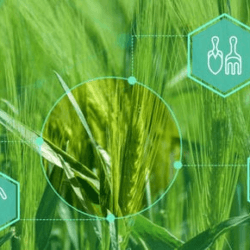Europe’s Drought Might Force Acceptance of Gene-Edited Crops

For decades, the EU has had some of the tightest restrictions on genetically altered agriculture. That could be about to change.
Europe’s summer of drought has been impossible to ignore. Rivers dried up, exposing the skeletons of warships and ancient buildings. Images captured by satellite show swathes of the continent’s normally verdant fields turned to parched dust bowls.
The hot, dry conditions have also wreaked havoc on Europe’s agriculture. Most of the continent’s water-starved fields will produce lower than expected yields this summer. For some crops the difference is stark: Soybean yields are 15 percent below their five-year average while sunflower yields are 12 percent down. With agricultural supply chains already stretched because of the war in Ukraine, the vulnerabilities in Europe’s food system are looking extremely exposed.
In response, some European politicians are starting to rethink the European Union’s long-standing opposition to genetically modified (GMO) and gene-edited crops. In July, an Italian member of the European Parliament called for a loosening of the rules that restrict crop varieties created using new gene-editing techniques like CRISPR from being grown and sold within the EU. “New agricultural biotechnology can provide experimentation for more drought- and pest-resistant plants,” member Antonio Tajani said in a meeting at the European Parliament. Other Italian politicians have joined him in calling for similar changes to gene-editing regulations. In northern Italy, the drought is so severe that rice fields are drying up and farmers are facing much lower harvests than normal.
If European droughts are here to stay, farmers might need new crop varieties that can withstand long, dry summers. Until recently, scientists who wanted to create more drought-resistant crops would have two main options: conventional breeding, or genetic modification. Genetically modified crops are made by inserting genetic material from another organism into the DNA of a plant—usually a gene that makes the crop resistant to insects or herbicides. The EU’s strict rules on GMOs mean that only two such crops have ever been approved there, and only one—a bug-resistant corn—is grown within EU borders. In the United States, by contrast, nearly 90 percent of soybean and corn fields are GMO. Gene editing is a separate and more recent technique, and involves directly editing the genome of an organism rather than inserting genes from a different species. It was expected to avoid GMO regulations, but in 2018 the European Court of Justice ruled that gene-edited crops should be subject to the same regulations as GMOs.